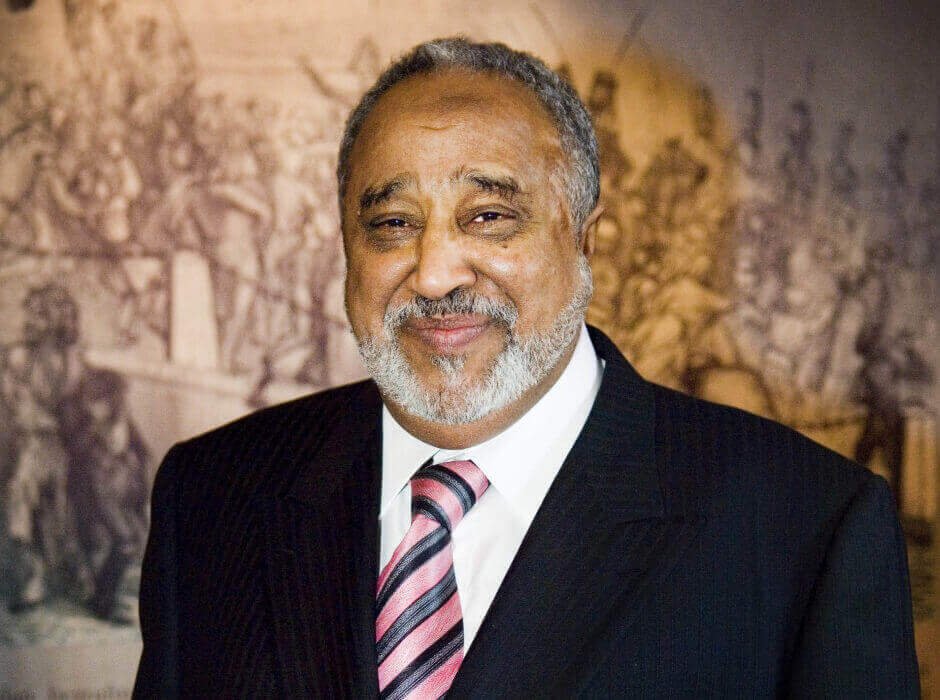Deborah Dan-Awoh
Ethiopia, Africa’s second most populous country, has witnessed its fair share of challenges over the past fifty years, from military rule and civil war to devastating famine.
However, in recent times, the nation has gradually begun experiencing economic growth and garnering increased strategic importance in the region.
At the forefront of this transformation stands Mohammed Al Amoudi, tagged the richest in Ethiopia- a man of dual heritage, born to a Saudi father and Ethiopian mother, he now holds the reins of wealth and influence in the country.
The Ethiopian billionaire is worth $5.42 billion as of the time this report was written.
With an impressive portfolio spanning construction, agriculture, and energy companies across Sweden, Saudi Arabia, and Ethiopia, Al Amoudi’s fortune primarily derives from closely held businesses in these nations.
Although no indication of outside partners has been found, the assumption is that the billionaire owns all of these assets.
Background
Born in 1946, Al Amoudi spent his formative years in Ethiopia before relocating to Saudi Arabia at the age of 19, where he eventually obtained Saudi citizenship.
It was in Saudi Arabia that he laid the foundations for his immense wealth, making strategic moves in the construction and real estate sectors, often benefiting from lucrative government contracts.
He later established the conglomerate Midroc in the early 1980s, a pivotal moment that paved the way for even greater successes.
During the mid-1990s, Al Amoudi’s vision extended to Ethiopia, where he fostered a close relationship with the ruling party, the Ethiopian People’s Revolutionary Democratic Front.
Today, he stands as the country’s largest foreign investor, holding an impressive 98 per cent stake in Ethiopia’s primary large-scale gold mine.
His influence also extends to diverse sectors such as agriculture, manufacturing, real estate, steel, and construction, significantly contributing to Ethiopia’s economic growth and development.
At the peak of his wealth in 2017, Al Amoudi’s net worth soared to over $8 billion.
However, subsequent fluctuations in global oil and gold prices at the time of estimation led to a relative decline in his net value.
Al Amoudi, the Oil Magnate
With an eye for expansion, Al Amoudi ventured into the oil industry during the 1990s through his energy-focused holding group, Corral Petroleum.
His acquisitions included Swedish energy companies OKP (now Preem Petroleum) and Svenska Petroleum in 1994. Additionally, he assumed control of Morocco’s two largest oil refineries, merging them to create Samir.
Investment in Ethiopia
Ethiopia’s rich gold reserves did not escape Al Amoudi’s attention. His investments in the country include ownership of Midroc Gold, the largest gold miner in Ethiopia, and the Okote Gold Mine, which holds immense potential.
These ventures have solidified his title as the “King of the Gold Mines.”
Commitment to Philanthropy and Education:
Al Amoudi’s success has not blinded him to the needs of others. Through various initiatives, he has demonstrated a deep commitment to education and training.
Unity University, established in 1991, has been a significant part of this endeavour, offering diploma and degree programs in several fields.
Additionally, he has invested in the Harari National Cultural Centre and has supported early-stage Ethiopian space exploration.
Al Amoudi’s Controversies
Al Amoudi’s journey to prosperity has not been without its share of controversies. In 2005, Al Amoudi faced a high-profile defamation case in the UK, which was triggered by articles published by self-proclaimed terrorist expert, Jean Charles Brisard.
These articles made serious accusations, alleging that Al Amoudi was involved in funding terrorism.
However, the matter was resolved out of court, and Brisard later issued an apology, confessing that the information he presented was indeed false.
Similarly, in July 2011, Al Amoudi found himself embroiled in another defamation case, this time against Elias Kifle, the publisher of Ethiopian Review, a prominent website.
The UK court ruled in favour of Al Amoudi, awarding him $282,000 in damages.
Subsequently, in November 2017, Al Amoudi faced an altogether different challenge when he was detained by Saudi authorities during an anti-corruption crackdown.
The circumstances surrounding his arrest and the conditions of his release in January 2019 remained undisclosed by the Saudi authorities.

 by
by 















He is one of those exemplary individuals who are the products of that gem of the colored that found runaway success through hard work combined with ingenuity outside the country. There are many of them who found success here among us in USA, Canada, Europe and Oceania. There are several others in the old country itself even though not to his level. Those of you who had the chance to live in the Arabian Peninsula in the 1950’s and 60’s like me you would remember where most of the civil servants running essential public institutions were originally from the old country They were all born in Ethiopia. Those lard ass Wahhabis had no clue how to run cities the modern ways. I remember meeting a high level civil servant running one of the public institutions in the city Hooded in the then North Yemen. I was pleasantly gob smacked to find one in the former British Protectorate of Aden who was born in the same region as mine, Western Hararghe and who was fluent in Afaan Oromoo. He was from the Galamso, Habro area. You could not tell just by looking at them because they were blended well in the community. When commies took over Aden most of those civil servants and technocrats left for Saudi Arabia, the Gulf States and the West. Others who stayed behind were exploited by the commies to cement their satanic relationship with the demon Mengistu in the 1970’s. Those who left had become very successful entrepreneurs in their new host countries. O my old country, my sweetheart! When will you learn how to keep your children?